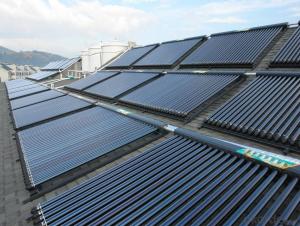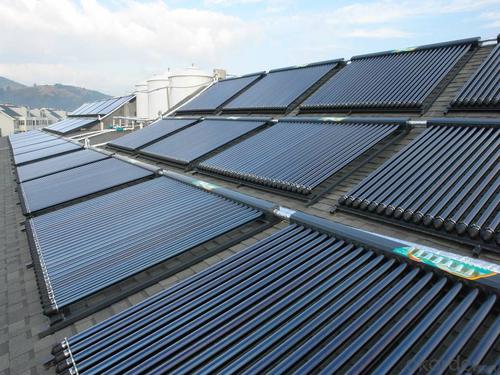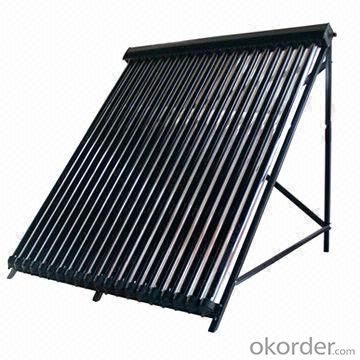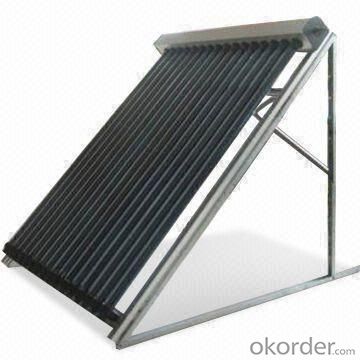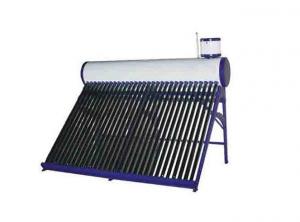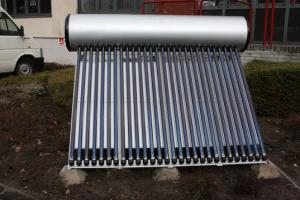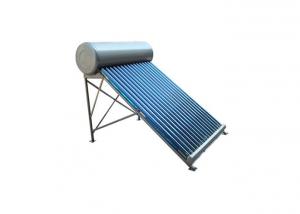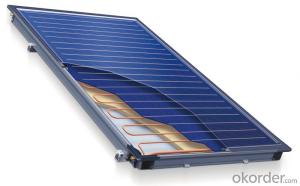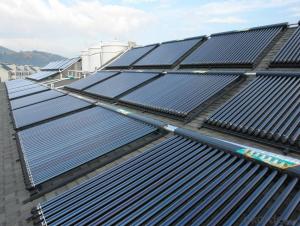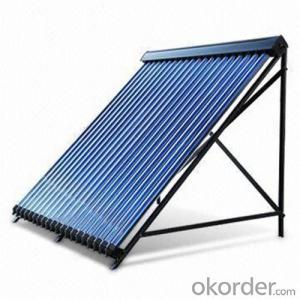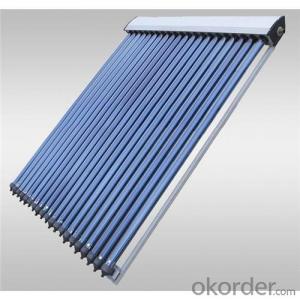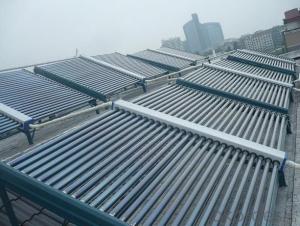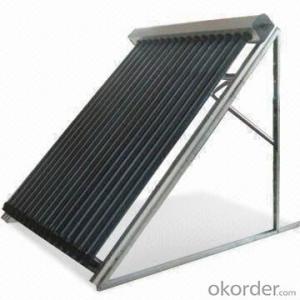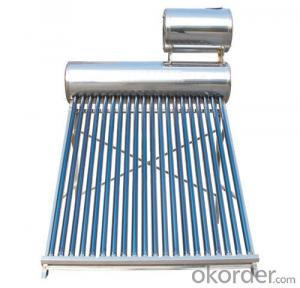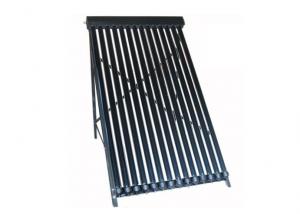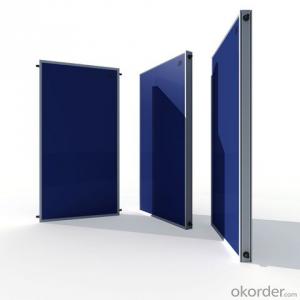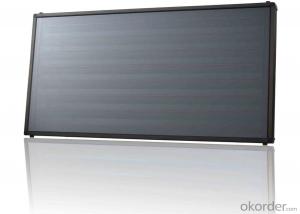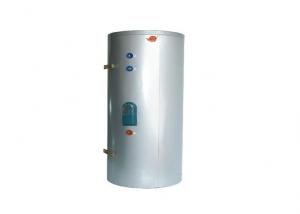Solar Collectors UK - 10 Tubes Solar Pipes Solar Collectors EN12975
- Loading Port:
- China main port
- Payment Terms:
- TT OR LC
- Min Order Qty:
- 5 set
- Supply Capability:
- 10000 set/month
OKorder Service Pledge
OKorder Financial Service
You Might Also Like
Specification
manifold (inner) | red copper |
manifold (exterior) | aluminum alloy |
glass tube dimensions | 58mm * 1800mm |
daily efficiency | ≥55% |
heat preservation | 72 hours |
hail resistance | 25mm |
max pressure | 7 bar |
coating of vacuum tube | ALN/AIN-SS/CU |
heat pipe | anti-freezing > -35 degree |
certificate | Solar Keymark, EN12975,SRCC |
Serious Product
Models | L*W*H mm | Vacuum tube | Power output | Efficiency | Header mm | Frame | container loading 20FT/40HQ sets | Gross Weight kg |
SHC-8 | 1917*910*133 | 58*1800*8pcs | 939W | 0.668 | Φ35/1.0 | AL alloy | 185/445 | 27 |
SHC-10 | 1917*1130*133 | 58*1800*10pcs | 1189W | 159/385 | 33 | |||
SHC-12 | 1917*1350*133 | 58*1800*12pcs | 1440W | 149/358 | 40 | |||
SHC-15 | 1917*1680*133 | 58*1800*15pcs | 1815W | 120/290 | 49 | |||
SHC-18 | 1917*2010*133 | 58*1800*18pcs | 2191W | 100/242 | 59 | |||
SHC-20 | 1917*2230*133 | 58*1800*20pcs | 2442W | 87/210 | 66 | |||
SHC-22 | 1917*2450*133 | 58*1800*22pcs | 2692W | 83/202 | 72 | |||
SHC-24 | 1917*2670*133 | 58*1800*24pcs | 2943W | 77/188 | 79 |
Packaging & Delivery
Packaging Details: | Exporting Carton with big foaming protection |
Delivery Detail: | In 10-15 days |
Loading Quantity
Model | Tube | Tube Q.T.Y | Loading Q.T.Y/40HQ |
GSC15 | 58*1800mm | 15pcs | 315sets |
GSC18 | 58*1800mm | 18pcs | 265sets |
GSC20 | 58*1800mm | 20pcs | 248sets |
GSC22 | 58*1800mm | 22pcs | 225sets |
GSC25 | 58*1800mm | 25pcs | 200sets |
GSC30 | 58*1800mm | 30pcs | 168sets |
Details of solar collector:
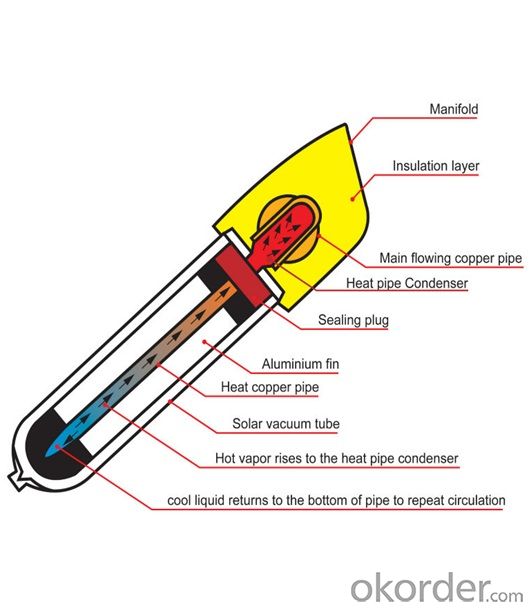
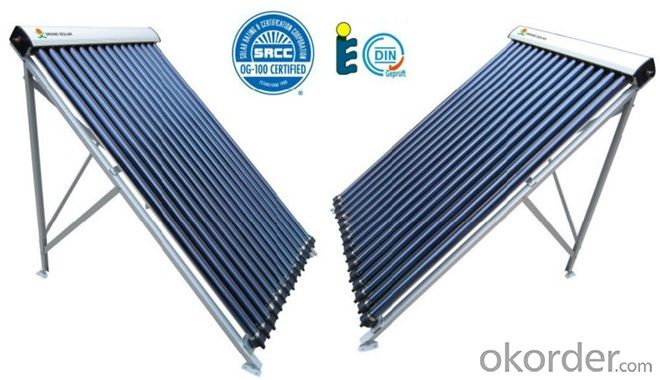

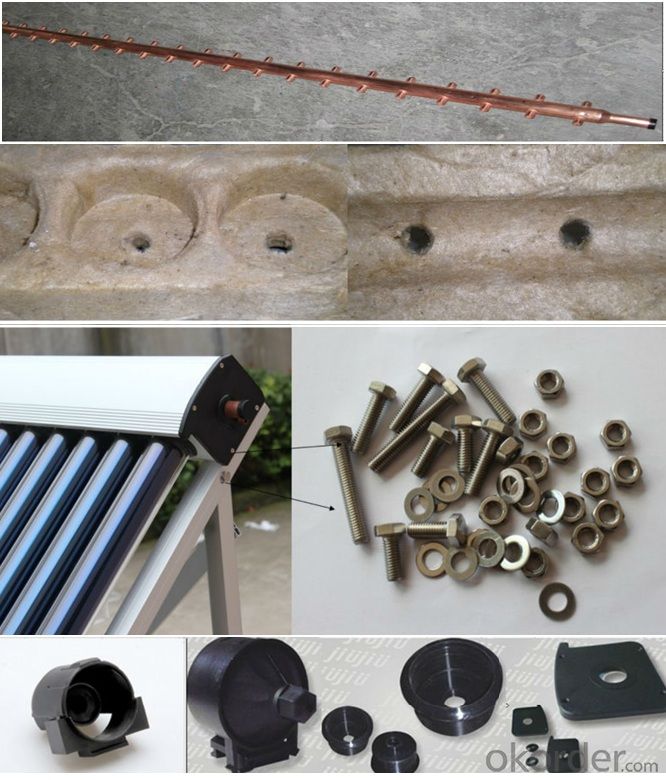
- Q: Can solar collectors be used for pool heating?
- Yes, solar collectors can be used for pool heating.
- Q: Can solar collectors be used in incineration plants?
- Yes, solar collectors can be used in incineration plants. Solar collectors are devices that convert solar energy into heat energy, which can then be used for various purposes. In the case of incineration plants, solar collectors can be used to provide heat for the incineration process. Incineration plants are facilities where waste materials are burned at high temperatures to generate energy. The heat generated from the combustion process is usually used to produce steam, which in turn drives turbines to generate electricity. By using solar collectors, the heat required for the incineration process can be supplemented or even replaced, reducing the reliance on fossil fuels and decreasing the carbon emissions associated with the plant's operation. Solar collectors can be integrated into the design of incineration plants to capture the sun's energy and convert it into heat. These collectors typically consist of a series of solar panels or tubes that absorb sunlight and transfer the heat to a working fluid, such as water or oil. This heated fluid can then be used to provide the necessary heat for the incineration process. The use of solar collectors in incineration plants offers several advantages. Firstly, it reduces the reliance on fossil fuels, making the plant more sustainable and environmentally friendly. Secondly, it can help to lower operating costs by offsetting the need for conventional heat sources, such as natural gas or coal. Finally, solar collectors can enhance the overall efficiency of the incineration process by providing a consistent and reliable source of heat. However, it is important to note that the integration of solar collectors in incineration plants requires careful planning and engineering. Factors such as the plant's location, available sunlight, and the design of the solar collector system need to be taken into account to ensure optimal performance. Additionally, the size and capacity of the solar collector system must be properly sized to meet the heat requirements of the incineration process. In conclusion, solar collectors can indeed be used in incineration plants to provide heat for the incineration process. By harnessing the sun's energy, these collectors offer a sustainable and cost-effective solution to reduce reliance on fossil fuels and decrease carbon emissions in the operation of incineration plants.
- Q: How do solar collectors impact energy independence?
- Solar collectors have a significant impact on energy independence as they harness renewable energy from the sun, reducing the reliance on fossil fuels and external sources of energy. By generating clean and sustainable electricity, solar collectors enable individuals, communities, and even countries to become more self-sufficient and less dependent on traditional energy grids. This promotes energy independence by providing a reliable and eco-friendly alternative to conventional energy sources.
- Q: What is a trough solar collector?
- As a high-temperature collector, can get a higher collector temperature, can be used for power generation, refrigeration and air conditioning, heating, desalination and other production and living areas.
- Q: Can solar collectors be used for generating electricity on stadiums?
- Yes, solar collectors can be used for generating electricity on stadiums. They can be installed on the roofs or in open areas surrounding the stadium to harness sunlight and convert it into electricity through photovoltaic panels. This renewable energy source can help reduce the stadium's carbon footprint and provide a sustainable and clean power supply.
- Q: What is the impact of humidity on the performance of solar collectors?
- Humidity can have both positive and negative impacts on the performance of solar collectors. On one hand, higher humidity levels can help to reduce dust and dirt accumulation on the surface of the solar collectors, thereby improving their efficiency. The moisture in the air can act as a natural cleaner, removing particles that would otherwise obstruct the sunlight and reduce the amount of energy that can be converted into electricity or heat. On the other hand, excessive humidity can also lead to condensation on the surface of the solar collectors. This condensation can create a barrier that hinders the absorption of solar radiation, reducing the overall performance of the collectors. Additionally, condensation can also lead to the formation of water droplets that can corrode the collector's surface over time, potentially causing long-term damage and reducing its lifespan. Furthermore, high humidity levels can promote the growth of mold, algae, and other organic matter on the surface of the solar collectors. This buildup of organic matter can further obstruct sunlight, reducing the efficiency of the collectors and requiring more frequent cleaning and maintenance. In summary, while moderate humidity levels can have a positive impact by helping to keep the surface of solar collectors clean, excessive humidity can lead to condensation, corrosion, and the growth of organic matter, ultimately reducing their performance. Regular maintenance and cleaning are therefore essential to ensure optimal performance and longevity of solar collectors in humid environments.
- Q: What is the lifespan of a solar collector?
- The lifespan of a solar collector can vary depending on the type, quality, and maintenance of the system. However, on average, a well-maintained solar collector can last for 20 to 30 years or more.
- Q: How do solar collectors affect the resale value of a property?
- Solar collectors can positively impact the resale value of a property. They are considered a valuable and desirable feature as they provide renewable energy and reduce electricity costs. Potential buyers are often willing to pay more for a property equipped with solar collectors, making it a wise investment that can enhance the overall resale value.
- Q: Vacuum tube for solar collectors
- Heat pipe vacuum tube and other types of solar water heaters, compared with the following irreplaceable advantages:
- Q: Can solar collectors be used in conjunction with other energy sources?
- Yes, solar collectors can be used in conjunction with other energy sources. This is known as a hybrid energy system or hybridization of energy sources. By combining solar collectors with other sources such as wind, hydro, or fossil fuels, it is possible to create a more reliable and efficient energy system. This approach ensures a continuous power supply even when solar energy is unavailable, thus increasing the overall reliability and resilience of the energy system.
Send your message to us
Solar Collectors UK - 10 Tubes Solar Pipes Solar Collectors EN12975
- Loading Port:
- China main port
- Payment Terms:
- TT OR LC
- Min Order Qty:
- 5 set
- Supply Capability:
- 10000 set/month
OKorder Service Pledge
OKorder Financial Service
Similar products
Hot products
Hot Searches
Related keywords
